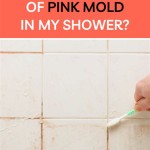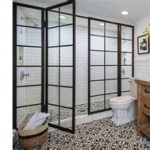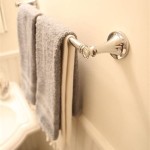Bathroom Wood Vanity Double Sink: A Comprehensive Guide
The bathroom wood vanity double sink presents a blend of functionality, aesthetics, and practicality in modern bathroom design. Its popularity stems from the increasing demand for shared bathroom spaces, especially in family homes or master suites. This article provides a comprehensive overview of bathroom wood vanity double sinks, covering their advantages, design considerations, material choices, installation aspects, and maintenance tips.
Enhanced Functionality and Convenience
One of the primary benefits of a bathroom wood vanity double sink is the enhanced functionality it offers. In shared bathroom spaces, the presence of two sinks eliminates the need for individuals to compete for access during peak hours, such as mornings or evenings. This can significantly reduce congestion and improve the overall efficiency of the bathroom routine. The double sink setup allows two people to perform separate tasks simultaneously, such as brushing teeth and applying makeup, without interfering with each other's personal space.
Beyond the convenience of simultaneous use, a double sink vanity typically provides more counter space and storage options than a single sink vanity. This is particularly beneficial for households with multiple occupants, as it allows each individual to have dedicated space for their toiletries, cosmetics, and other personal items. The increased storage capacity can help to maintain a clutter-free environment and improve the organization of the bathroom.
Moreover, the presence of two sinks can contribute to improved hygiene practices. Individuals can use separate sinks for different tasks, such as handwashing and facial cleansing, thereby minimizing the risk of cross-contamination. This is especially important in households with young children or individuals with compromised immune systems.
Design Considerations and Aesthetic Appeal
Bathroom wood vanity double sinks are available in a wide range of designs and styles, catering to diverse aesthetic preferences. Whether the desired aesthetic is modern, traditional, rustic, or contemporary, there is a double sink vanity to complement the existing bathroom décor. The selection of materials, finishes, and hardware plays a crucial role in achieving the desired look and feel.
The size of the bathroom is a critical factor to consider when choosing a double sink vanity. In smaller bathrooms, it is important to opt for a compact design that maximizes space utilization. Wall-mounted vanities can be a good option for smaller bathrooms, as they create the illusion of more space by freeing up floor area. In larger bathrooms, there is greater flexibility in terms of size and design, allowing for more elaborate and spacious vanities.
The placement of the vanity is another important consideration. It is generally recommended to position the vanity near a natural light source, such as a window, to maximize visibility and create a brighter bathroom environment. The placement of the vanity should also be carefully considered in relation to other bathroom fixtures, such as the toilet and shower, to ensure adequate space for movement and accessibility.
Lighting is crucial to the overall ambiance and functionality of the bathroom. Adequate lighting around the vanity area is essential for tasks such as applying makeup and shaving. Consider incorporating vanity lights, sconces, or overhead lighting to ensure sufficient illumination. The style of the lighting fixtures should complement the overall design of the vanity and the bathroom.
The choice of countertop material is also significant in terms of aesthetics and durability. Popular countertop materials for bathroom vanities include granite, marble, quartz, and ceramic. Each material has its own unique characteristics in terms of appearance, maintenance requirements, and cost. Granite and marble are known for their natural beauty and durability, while quartz and ceramic are more resistant to stains and scratches. The sink type, whether undermount, vessel, or integrated, also contributes to the overall design aesthetic.
Material Choices and Durability
The choice of wood for a bathroom vanity significantly impacts its durability, aesthetics, and suitability for the humid environment. Several types of wood are commonly used for bathroom vanities, each with its own advantages and disadvantages.
Solid wood, such as oak, maple, cherry, and walnut, is a popular choice for bathroom vanities due to its natural beauty, durability, and timeless appeal. Solid wood vanities are typically more expensive than vanities made from other materials, but they offer superior quality and longevity. However, solid wood is susceptible to moisture damage, so it is important to choose a wood species that is naturally resistant to water and to properly seal and finish the wood to protect it from moisture.
Plywood is an engineered wood product made from thin layers of wood veneer glued together. Plywood is more resistant to moisture than solid wood and is less prone to warping or cracking. It is a cost-effective option for bathroom vanities, but it may not have the same aesthetic appeal as solid wood. When using plywood for a bathroom vanity, it is important to choose a high-quality plywood with a waterproof adhesive.
Medium-density fiberboard (MDF) is another engineered wood product made from wood fibers bonded together with resin. MDF is a smooth, uniform material that is easy to paint or laminate. It is a cost-effective option for bathroom vanities, but it is not as durable as solid wood or plywood. MDF is also susceptible to moisture damage, so it is important to properly seal and finish the material to protect it from moisture.
The finish applied to the wood vanity is critical for protecting it from moisture and enhancing its durability. Common finishes for bathroom vanities include varnish, lacquer, and polyurethane. These finishes create a protective barrier that prevents moisture from penetrating the wood and causing damage. The finish should be applied in multiple coats to ensure adequate protection.
Hardware, such as knobs, pulls, and hinges, also plays a role in the durability and functionality of the bathroom vanity. It is important to choose hardware made from high-quality materials, such as stainless steel or brass, to prevent corrosion and ensure long-lasting performance. The hardware should also be appropriately sized and styled to complement the overall design of the vanity.
Installation Aspects and Plumbing Considerations
The installation of a bathroom wood vanity double sink typically involves several steps, including removing the old vanity, preparing the plumbing, installing the new vanity, and connecting the plumbing fixtures. While it is possible to install a vanity as a DIY project, it is generally recommended to hire a professional plumber to ensure proper installation and prevent potential plumbing issues.
Before installing the new vanity, it is essential to shut off the water supply to the bathroom and disconnect the plumbing fixtures from the old vanity. The old vanity can then be removed, and the area can be cleaned and prepared for the new vanity. It is important to ensure that the floor is level and that the plumbing lines are properly aligned before installing the new vanity.
The new vanity should be carefully positioned and secured to the wall using appropriate fasteners. The plumbing fixtures, including the sink, faucet, and drain, can then be connected to the plumbing lines. It is important to use plumber's tape or sealant to ensure a watertight seal and prevent leaks. The supply lines should be connected to the faucet, and the drainpipe should be connected to the drain assembly.
Plumbing placement is a crucial consideration during the installation process. The location of the water supply lines and drainpipes must align with the corresponding connections on the vanity. If the plumbing lines are not in the correct position, it may be necessary to hire a plumber to relocate them. This can add to the overall cost of the installation but is essential for ensuring proper functionality of the vanity.
Accessibility is another important consideration when planning the plumbing for a double sink vanity. Ensure that the shut-off valves for both sinks are easily accessible in case of emergencies or repairs. Also, consider the placement of the drainpipes to avoid obstructing storage space within the vanity.
Maintenance and Longevity
Proper maintenance is essential for preserving the beauty and longevity of a bathroom wood vanity double sink. Regular cleaning and care can help to prevent damage from moisture, stains, and everyday wear and tear.
The vanity should be cleaned regularly with a mild soap and water solution. Avoid using harsh chemicals or abrasive cleaners, as these can damage the finish. Use a soft cloth or sponge to wipe down the vanity and dry it thoroughly after each cleaning. Pay particular attention to areas around the sink and faucet, as these are more prone to moisture damage.
Spills and splatters should be cleaned up immediately to prevent staining or discoloration. Avoid leaving water or other liquids on the vanity surface for extended periods of time. Use coasters or placemats to protect the vanity from hot or cold items. A dedicated cleaning schedule, perhaps weekly, will ensure that grime buildup is kept to a minimum.
To protect the wood from moisture damage, consider applying a sealant or water repellent to the vanity surface. This will create a protective barrier that prevents moisture from penetrating the wood. The sealant should be reapplied periodically, according to the manufacturer's instructions.
Inspect the vanity regularly for signs of damage, such as cracks, chips, or peeling finish. Repair any damage promptly to prevent it from worsening. Small cracks or chips can be filled with wood filler, and the finish can be touched up with paint or varnish. If the damage is extensive, it may be necessary to refinish the entire vanity.
Inspect the plumbing connections regularly for leaks. Leaks can cause significant damage to the vanity and the surrounding area. If you detect a leak, tighten the connections or replace the worn-out parts. If you are unable to fix the leak yourself, contact a professional plumber.

60 Solid Wood Double Sink Vanity Modern Console

Hargrove Double Bathroom Vanity 60 72 West Elm

Home Decorators Collection 60 In W X 22 D 34 5 H Double Sink Freestanding Bath Vanity Reclaimed Wood With Grey Engineered Stone Top Tj 0236v6022be The Depot

Roswell León 60 In W X 22 D 34 H Double Sink Bath Vanity Fir Wood Brown With White Composite Stone Top 803860m Fn Lwn The Home Depot

Allen Roth Harwood 60 In Natural Undermount Double Sink Bathroom Vanity With White And Gray Quartz Top The Vanities Tops Department At Com

Fallon 60 White Oak Double Vanity Rejuvenation

Chester 60 Inch Double Sink Natural Wood Vanity

60 Modern Wood Vanity Double Sink What We Make

Hargrove Double Bathroom Vanity 60 72 West Elm

60 Floating Wood Vanity Double Sink What We Make
Related Posts







